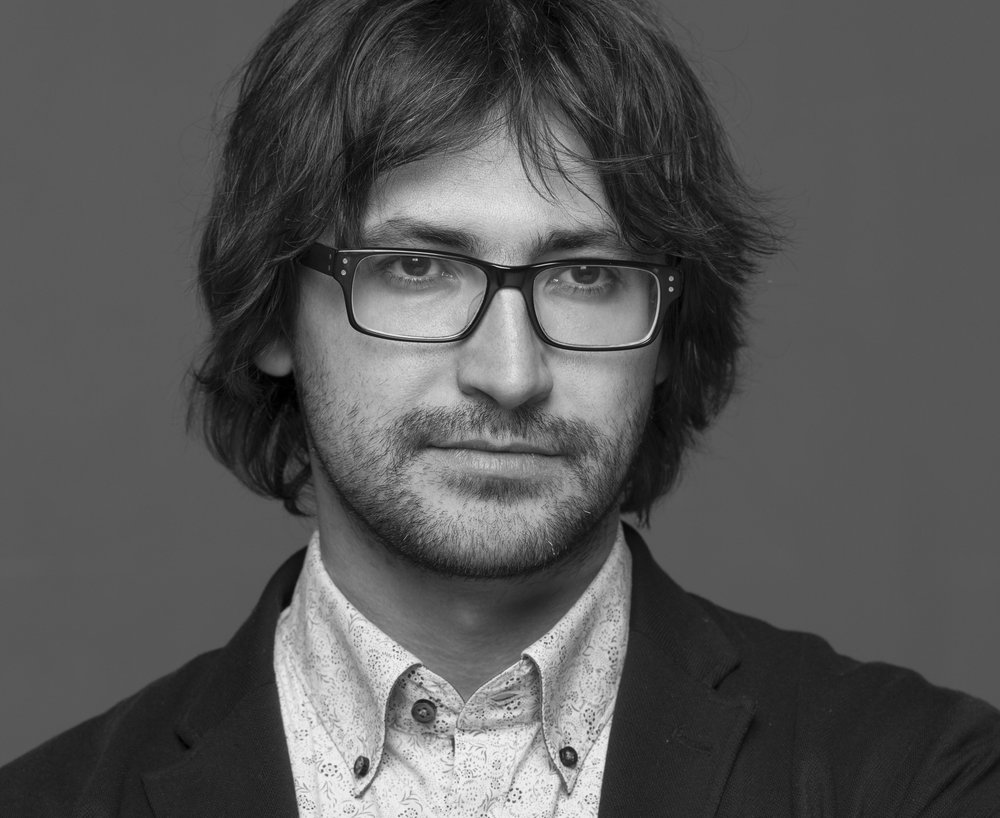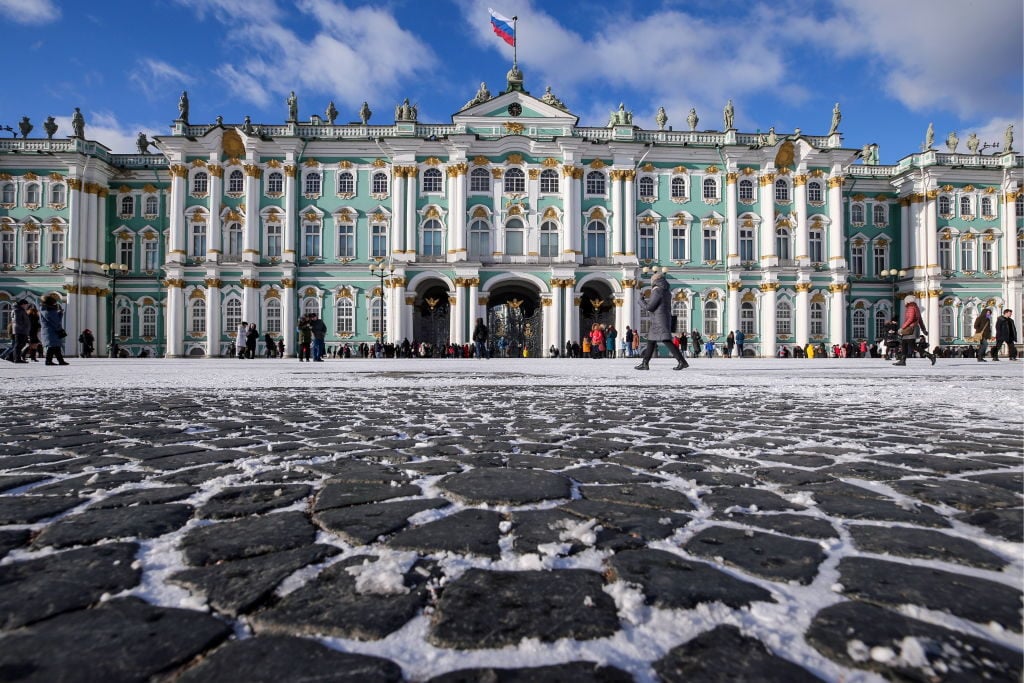‘It All Depends On How You Read the Rules’: Dimitri Ozerkov On Curating Contemporary Art at the Hermitage


Artnet Gallery Network

Dimitri Ozerkov, the director of contemporary art at St. Petersburg’s State Hermitage Museum, has been bold in exploring solutions to challenges facing major international galleries and museums. He’s also raised some eyebrows in championing exciting young contemporary artists whose works can be a bit controversial in the state-funded museum. Ulvi Kasimov, the founder of .ART, recently spoke with Ozerkov about maintaining curatorial freedom.
How did you find your way into the art world?
My father was an architect and my mother an art lover so art was always around me. From childhood, I visited the Winter Palace in St Petersburg, which was the official residence of the Russian monarchs until the 1917 revolution and is now the home of the State Hermitage Museum. I was very bad at maths so when I went to university I studied humanities and I moved to art history because you have images as well as facts. The best place to work after university was the State Hermitage Museum. I was writing for an art magazine occasionally and people noticed me from there. I never fought for my job: the Hermitage decided to do a contemporary art program and I was asked to guide it.
How would you describe the collection of the Hermitage and what are you trying to bring the museum?
The Hermitage is an international museum. It’s a huge institution and the aim is always to have international art presented here, just as it was in old times. Of course, there are Russian artists as well, but only if they are good enough to be part of this universal institution. I’m trying to show the artists I like and no do boring exhibitions. If something has to be done, I try to avoid doing it.
What is on your wish list of changes to the museum structure?
We don’t have state indemnity of works as the UK has. We have to go to an insurance company and this can cost a big part of the budget. State indemnity would help a lot in reshaping the situation. Also, we have these political troubles with an embargo and sanctions so the American museums can’t receive our works for their exhibitions. That’s a bad thing because we used to create exhibitions together with American museums and there were a lot of successes and a lot of good memories. We do receive works from America but America doesn’t have our work.
What are the other major challenges in the way the art world works?
The problem is that there are more and more artists now and the quantity of art is really immense. There are so many artists and galleries and it looks like a bubble now.
What are your frustrations with the way the art world works?
I don’t have frustrations but the question is how to know most of the new names because contemporary art has no real specialty. You can be a specialist in French ceramics from the 16th century or Dutch drawings from the 17th century but contemporary art has to encompass everything—you have to know everything to create bridges between different epochs and different styles. My frustration is possibly missing something.

The State Hermitage Museum in St. Petersburg. Photo by Peter KovalevTASS via Getty Images.
Can you give me an example?
I’m not very familiar with Eastern art; I’m more familiar with Western Art. So if I talk to an Eastern artist I’m not sure that I get all the points. I would love to know more about their mentality but I don’t have enough time because you have to really live there and read books and so on. It’s a problem of time.
How could the machinations of the art world be improved?
There are different slices of the art world: there are museums, there are galleries, artists, studios, art fairs. I would say the improvement would come from more and more connections between different kinds of institutions; more and more contact between them. Because now museums are more like fortresses: they close every evening, you have security and so on. To reach the director or curator you have to know the special ways to get there.
What about intermediaries such as galleries and fairs? Can they help here?
They are basically platforms for all of us to meet. And where we meet artists and other directors is at the biennales and the fairs and so on. I think what Art Basel for example does is make a platform that puts different together different people from different areas in Asia, in Miami and Basel – this is very helpful.
Should galleries still exist as physical spaces?
I think galleries are the best places because they give artists the opportunity to create what they want to create. They put their money on it and their risk sometimes. They are private initiatives that work very well.
Which Russian artists are doing something interesting?
I can give you three names: Ivan Plusch, Andre Kuzkin and Aslan Gaisumov. They produce original content. Most artists are copying each other but these three people are creating something original. All three work in different media. Ivan Proush does paintings and installations, Kuskin does video and performance and also installations and Gaisumov do mostly installations and some video as well.
How is contemporary Russian work different from the art scene in the West?
There are some Russian artists who are very interesting but most of them are very old-fashioned in my view. If you want to see what’s happening in contemporary art now you have to visit London, New York and probably Paris. In Russia, you only see it via the internet but you don’t really know what it’s all about.
Why is this?
Most Russian artists have a very classical education. They go to academies where they’re not taught video art or installation – they’re taught how to paint a horse! They must know how to paint a horse. They’re very good painters – but art isn’t only about this now.
How is the Hermitage funded? Do rely solely on state funding?
We are funded 50 percent by the state. I think we have quite a good balance of private funding and state funding because it gives us an opportunity to do what we do. State funding is spent mostly on security, renovation, and some basic needs so when we have a problem we don’t need to sell a painting from the collection to repair the roof. It’s also some freedom because we don’t spend state money to fund contemporary exhibitions. The only thing the state is paying for is electricity, my salary, and the salary of our security but the main money is drawn from sponsors. For any important, huge project we fundraise and if we find money, we do it. It’s a good balance.
You have a reputation for showing provocative work by artists such as Jake and Dinos Chapman, Terence Koh, and Dash Snow. Why do you show this kind of work?
I don’t really look for provocation. I basically try to do interesting work but some people find it provocative. That’s just how it turns out.
You often create relationships between established and emerging artists. Tell us about that.
If you simply bring a young artist in to throw something around it’s not always good because the young artist should be on the same level as the old artist; there should be dialogue. My last project was a commentary between Jan Fabre and Dutch and Flemish masters in the Hermitage, a dialogue between old art and contemporary. It was a great exhibition. I think this dialogue is vital – it’s something that delivers a new kind of reality to our lives. That’s what I aim to do here.
What do you mean when you say “a new kind of reality”?
My personal feeling is that society goes very much towards simplifying itself. We have calendars, computers, companies that create for us and tell us what to eat. Shall we go for a jog? Shall we drink fresh juice or not? I think people know what to do and how to do it. When you know what to do and how to do it it’s the worst moment because you stop developing. Reality is much more complex. It’s a very good area in which to create a new reality. It really gives new perspectives and makes people more complex.
What has been the response to your exhibitions?
Some people hate what I do both inside the museum and outside the museum – desecrating old walls and making all of this type of bullshit – but some people really like it. My feeling is that if an exhibition changes one person’s view, that’s already a success. If a child comes to the museum and sees something that changes his life, that’s the only thing that’s worth doing.
Give us an example of an exhibition where you have achieved this.
In 2009 I did an exhibition with Charles Saatchi in Saint Petersburg entitled Newspeak – the new language – which was taken from George Orwell, and was a presentation of cutting-edge British artists from the Saatchi collection and from artists I had selected either from the collection or from other galleries in London. It was a very interesting view of the new world of contemporary art – a kind of cut of what you can see in London. This juxtaposition with the old masters was quite a successful thing; it was just next door to Poussin, Rembrandt and so on.
Do you have the freedom to stage anything you want?
I would say yes. I say to myself: If they started to censor me I would leave the museum and go to another institution, probably abroad. I don’t see any censorship. No committee, no institution, no federal service has come to me and said: No, don’t do it. I really feel no influence.
How can people protest if they are shocked by your exhibitions?
If we do something that people feel is provocative they can go to the court; they can go to the police. The police come and there is a story around it. I explain what I did and why and they take it and then nothing happens. I’ve never been prosecuted for this. If somebody is unhappy about the exhibition as people can be—if something shocks you and you think it’s not a good thing to show this kind of thing in the Hermitage, you write a petition to Federal services that says something like “put Dimitri in jail” or “stop his activity” and then they come and see the activity and I say it’s all according to the law. We live in the Russian Federation and we follow the rules of the Russian Federation. It all depends on how you read the rules of course.
What is the most successful project in your view?
I think the strongest project of mine is still in the future.